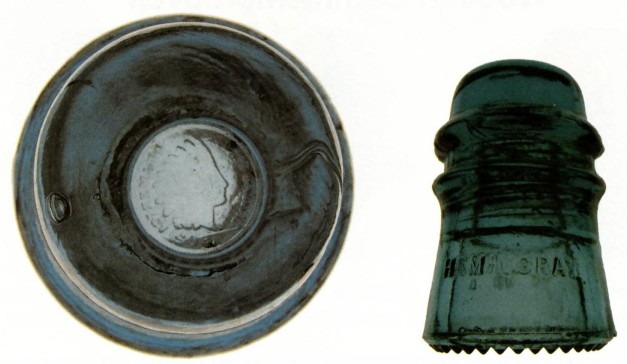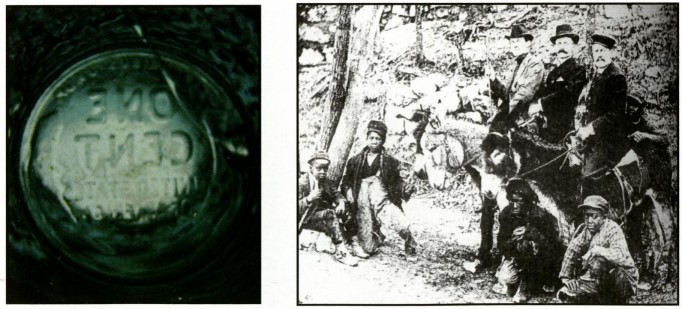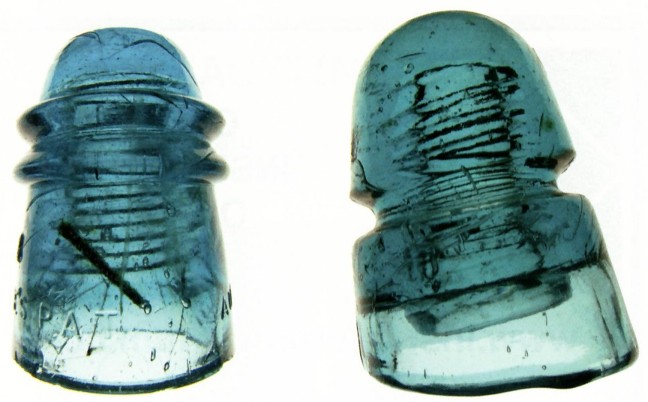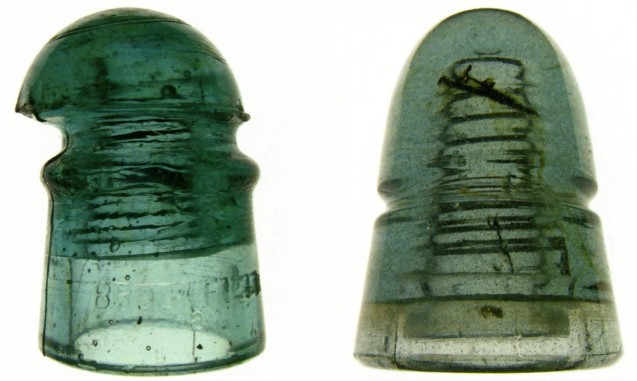FACTORY FUN
Reprinted from "Crown Jewels of the Wire", June 2006, page 22
There's no doubt that a job at a glass factory was difficult, demanding,
dirty, and often filled with drudgery. Perhaps to bring a little fun into the
job, workers occasionally placed coins into the molds. Shown below is a CD 121
Hemingray 16 that had an Indian head penny placed into the dome section of the
mold. The result is a mirror image of the 1905 penny frozen forever in aqua
glass.

Below is a portion of the dome of CD 152 Hemingray 40 containing the mirror
image of the reverse (wheat back) side of a Lincoln penny. The adjacent picture
shows some members of the crew that worked at the Hemingray plant in the early
1900's, about the time coins were placed into the molds of these two insulators.
Could one of them be the culprit?
Aqua Hemingray CD 121's and 152's are among the most common of all insulators. The next time you see a box
full in a "junk" shop or
antique store, you might want to take a closer look. You could just find a penny
for your efforts.


Goofing off at the plant is probably one of the rarer events that added
character to individual insulators. Most of the time, just the fact that
insulators were mass produced was sufficient to allow oddities to be created.
Above, left, a square nail got into the glass batch and now enhances a CD 120
Homer Brookes. Above, right, not enough glass created an underpour resulting in
an extreme leaner. Below, left, the crown plate of the mold was out of position,
creating a weird looking Brookfield CD 101. And below, right, another nail
adorns an American beehive.

These delightful insulators are part of the collection of Bill Rohde, a collector
known best for his porcelain insulators. The photograph of the
Hemingray workers is from H.G. "Bea" Hyve's book, "The Hemingray
Glass Company, A Most Colorful History", 1998, 481 pages.
|
